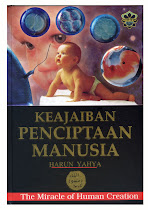CERN fires up new atom smasher to near Big Bang
By ALEXANDER G. HIGGINS, Associated Press Writer Sun Sep 7, 2:52 PM ET
GENEVA - It has
been called an Alice in Wonderland investigation into the makeup of the universe — or dangerous tampering with nature that could spell
doomsday.
the case, the most powerful atom-smasher ever built comes online Wednesday, eagerly anticipated by scientists worldwide who have awaited this moment for two decades.
The multibillion-dollar Large Hadron Collider will exp
lore the tiniest particles and come ever closer to re-enacting the big bang, the theory that a colossal explosion created the universe.
The machine at CERN, the European Organization for Nuclear Research, promises scientists a closer look at the makeup of  matter, filling in gaps in knowledge or possibly reshaping theories.
matter, filling in gaps in knowledge or possibly reshaping theories.
The first beams of protons will be fired around the 17-mile tunnel to test the controlling strength of the world's largest superconducting magnets. It will still be about a month before beams traveling in opposite directions are b
rought together in collisions that some skeptics fear could create micro "bl
ack holes"
and endanger the planet.
The project has attracted researchers of 80 nationalities, some 1,200 of them from the United States, which contributed $531 million of the project's price tag of nearly $4 billion.
"This only happens once a generation," said Katie Yurkewicz, spokeswoman for the U.S. contingent at the CERN project. "People are certainly very excited."
The collider at Fermilab outside Chicago could beat CERN to some discoveries, but the Geneva equipment, generating seven times more energy than Fermilab, will give it big advantages.
The CERN collider is designed to push the proton beam close to the speed of light, whizzing 11,000 times a second around the tunnel 150 to 500 feet under the bucolic countryside on the French-Swiss border.
Once the beam is successfully fired counterclockwise, a clockwise test will follow. Then the scientists will aim the beams at each other so that protons collide, shattering into fragments and releasing energy under the gaze of detectors filling cathedral-sized caverns at points along the tunnel.
CERN dismisse s the risk of micro black holes, subatomic versions of collapsed stars whose gravity is so strong they can suck in planets and other stars.
s the risk of micro black holes, subatomic versions of collapsed stars whose gravity is so strong they can suck in planets and other stars.
But the skeptics have filed suit in U.S. District Court in Hawaii and in the European Court of Human Rights to stop the project. They unsuccessfully mounted a similar action in 1999 to block the Relativistic Heavy Ion Collider at the Brookhaven National Laboratory in New York state.
CERN's collider has been under construction since 2003, financed mostly by its 20 European member states. The United States and Japan are major contributors with observer status in CERN.
Scientists started colliding subatomic particles decades ago. As the machines grew more powerful, the experiments revealed that protons and neutrons — previously thought to be the smallest components of an atom — were made of still smaller quarks and gluons.
CERN hopes to recreate conditions in the laboratory a split-second after the big bang, teaching them more about "dark matter," antimatter and possibly hidden dimensions of space and time.
Meanwhile, scientists have found innovative ways to explain the concept in layman's terms.
The team working on one of the four major installations in the tunnel — the ALICE, or "A Large Ion Collider Experiment" — produced a comic book featuring Carlo the physicist and a girl called Alice to explain the machine's investigation of matter a split second after the Big Bang.
"We create mini Big Bangs by bumping two nuclei into each other," Carlo explains to Alice, who has just followed a rabbit down one of the hole-like shafts at CERN.
"This releases an enormous amount of energy that liberates thousands of quarks and gluons normally imprisoned inside the nucleus. Quarks and gluons then form a kind of thick soup that we call the quark-gluon plasma."
The soup cools quickly and the quarks and gluons stick together to form protons and neutrons, the building blocks of matter.
That will enable scientists to look for still missing pieces to the puzzle — or lead to the formulation of a new theory on the makeup of matter.
Kate McAlpine, 23, a Michigan State University graduate at CERN, has produced the Large Hadron Rap, a video clip that has attracted more than a million views on YouTube.
"The things that it discovers will rock you in the head," McAlpine raps as she dances in the tunnel and caverns.
CERN spokesman James Gillies said the lyrics are "absolutely scientifically spot on."
"It's quite brilliant," Gillies said.
___
On the Net:
CERN: http://www.cern.ch
Fermi National Accelerator Laboratory: http://www.fnal.gov
The U.S. at the LHC: http://www.uslhc.us/
Large Hadron Rap: http://www.youtube.com/watch?vf6aU-wFSqt0






















0 comments:
Catat Ulasan